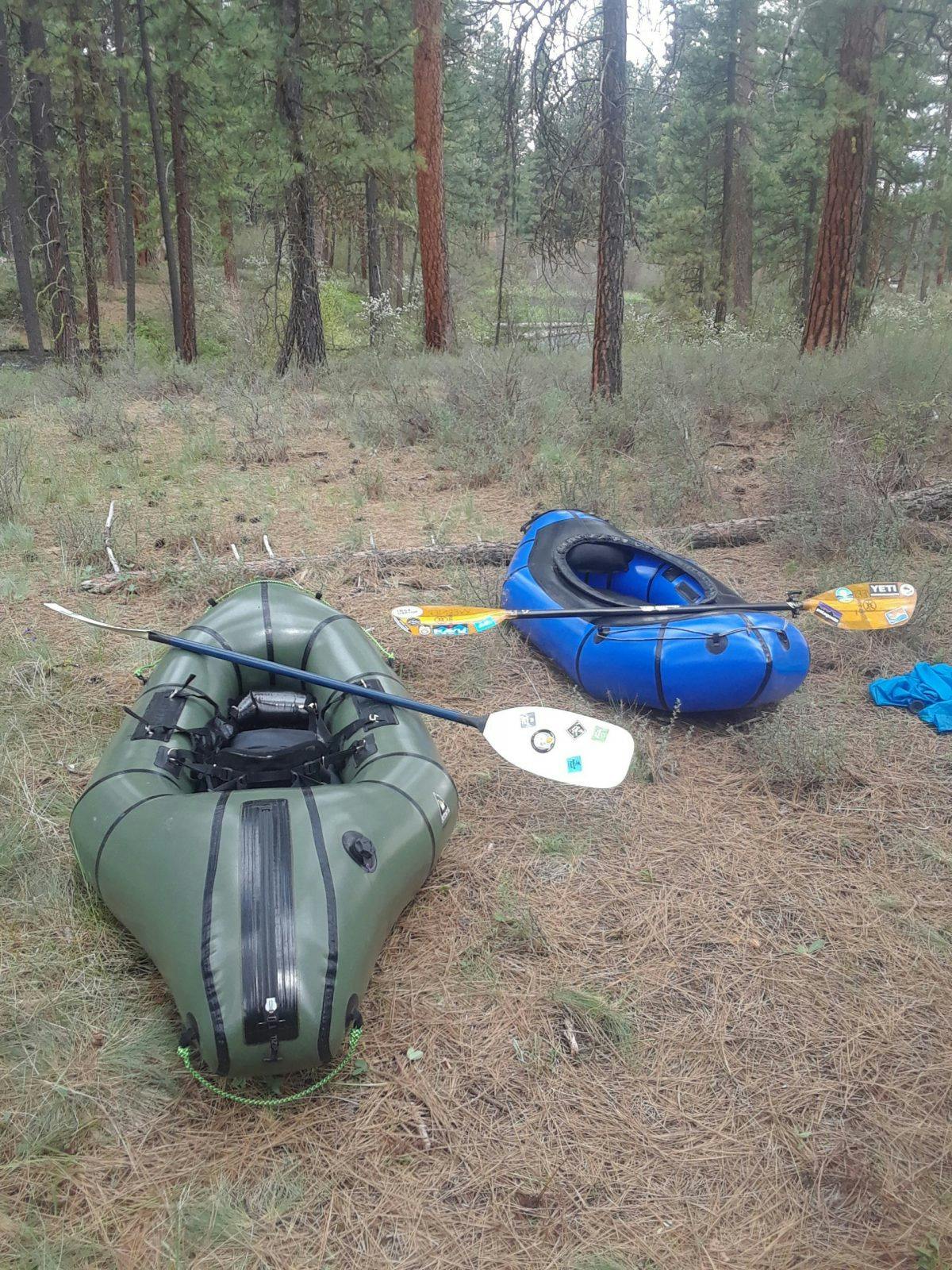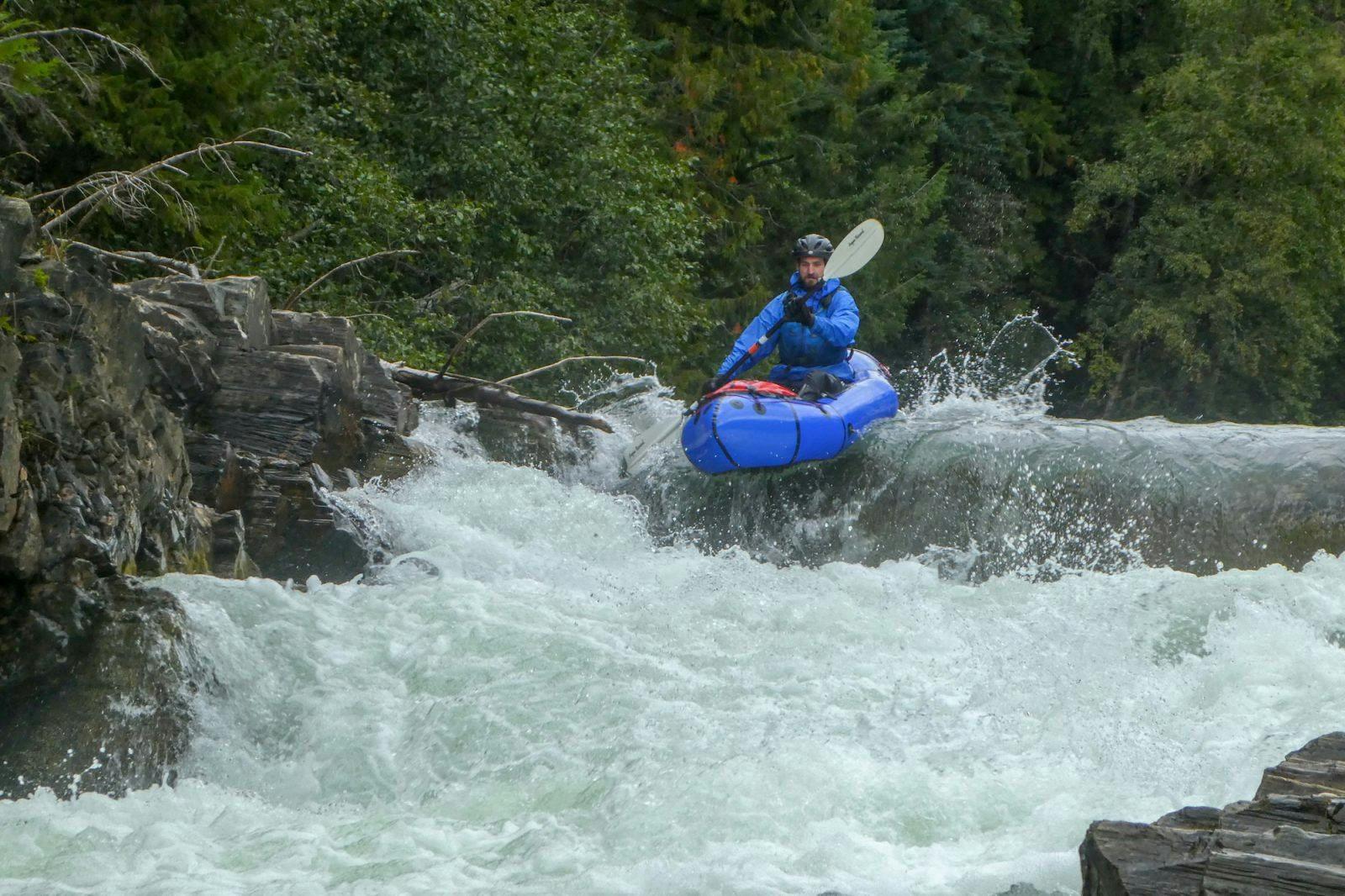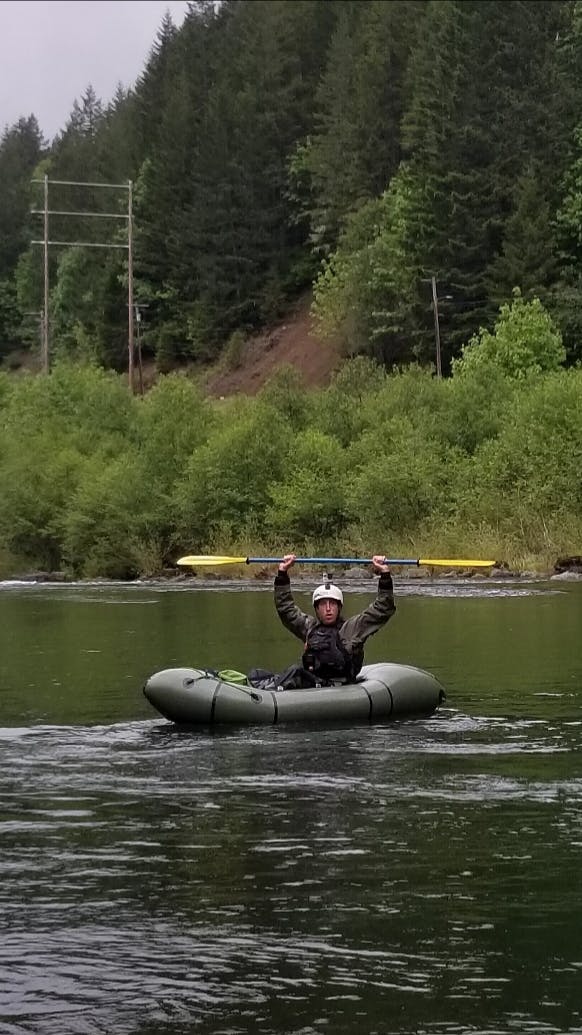The Wild and Scenic
Deschutes River
Story and Photos by: Dillon Upp
Journal Notes: May 8th
I’ve paddled plenty of different crafts in my short career on the rivers of the Pacific Northwest. From 9ft. creek boats, to 18ft. fully loaded gear boats, stand up paddle boards, inflatable air mattresses, open canoes, hard shell kayaks, inflatable kayaks, and those cheap Explorer 200 rafts you get at Big 5, but nothing is as fun as a packraft. For this quick strike mission on the Deschutes, my paddle partner Jordan and I had the privilege of taking two Alpacka packrafts down this beautiful stretch of high desert whitewater. I got to paddle a self bailing Gnarwhal, and Jordan took the whitewater decked Alpacka Classic. We had a late start, having to do our own shuttles, and after copious amounts of hot bean water with breakfast we were finally on our way to the put in.
The usual put in for overnight trips starts at mile 88 at the Trout Creek recreation area. After double checking our gear, we where on the water by 12:15pm. Like I said we got a later start than we wanted. Our first day on the water was sun filled, warm, with smiles for miles and very active wildlife for that time of day. We witnessed frolicking river otters, a family of raccoons, a lone bald eagle, heaps of ospreys showing their prowess by diving into the river and pulling out their daily catch, feral horses, and plenty of jumping trout. The start of this stretch of river is mainly agricultural land with ranches going from the hills to the river on river right, and river left soon turns into Warm Springs tribal land for a majority of the run, meaning you cannot step foot on river left unless invited
Note: Be respectful and please make sure to look into the rules and regulations for the rivers and land along them if you do a trip like this.
We were in no hurry, cruising through mostly flat water, with the main class III+ rapid called Whitehorse being super fun in the packrafts. We surfed a few waves, boofed a few rocks, and did a side hike up a public lands canyon that I’ve looked at and pondered about on past guided trips. We dubbed it Dead Horse Canyon due to the massive amounts of dead horses and cows that were scattered about, and when we got to a choke point in the canyon Jordan and I both felt like we were being watched, hairs on the back of our necks standing up, thinking there might be a mountain lion farther up, we left the way we came, and made it to camp by 6pm. We paddled 20 miles the first day, camping at Lower Rainbow Bend at a spot called Pebble Beach. No swims the first day, and with a crisp clear night the stars were awesome, the milky way visible, and nature’s light show played out as we dozed off, myself on a cot and Jordan in his hammock.

Journal Notes:
Lazy morning, both waking up around 9am, breakfast made, gear packed and ready to raft by 12pm. Another late start, but we weren’t in any hurry. We stopped by Harpham Flat, which is the normal put in for day trips on the Lower Deschutes, had a snack, bathroom break, and a beer. After our lunch break we continued through some fun class III’s and made it to the take out at (not so) Sandy Beach, mile 46, by 5pm. There is a stretch of the Deschutes that requires a mandatory portage due to the illegal running of a class VI called Sherars Falls, which makes 3 miles of river not runnable. There are two really gnarly rapids that are illegal to run because the falls have been a native fishing ground for thousands of years. We got lucky and didn’t have to hike the three miles around Sherars, our friend Zane was at the take out waiting for a friend and we hitched a ride to the next put in, Buckhollow at mile 43 and we were back on the water by 6pm.
It was getting late, and we were tired. This was also new territory for us and we didn’t know how far the next legit campsite was. The two of us found a nice sandy beach near a day use area with a hollow in the trees by the river where we set up camp around 7pm. We dubbed this renegade camp, “Dead Fish,” because of the big dead trout that was on the beach. This new section of river was a fun class III, with towering basalt cliffs and columns, rolling hills, and nothing but sunshine. We set up for the night, made a quick meal, and drank one of the few beers we brought before falling asleep.

Journal Notes: May 10th
I woke up early to do some fly fishing. Jordan got up soon after, so we made breakfast, packed up camp, and got on the water by 11am. The last day was the longest day, and the most river miles I have paddled in a day, by the time we got to Heritage Park at mile 0 we had paddled 36 miles. Jordan and I both took a swim. He got recirculated in a hole on Rattlesnake Rapid, and I went full bore into the meat of Gordan Ridge Rapid. I got launched 3 feet above the packraft, and landed right next to the boat, hand around the outside tube easily pulling myself back in. Both swims were really exciting and a memorable way to end this trip. There were antelopes on river right, and checked out some of the strange historical leavings of humanity on either side of the river, one being an abandoned caboose train car, and the other being a lot of abandoned cars from the early years of the auto industry. It was another sunny and beautiful day with amazing paddling and some great rapids.
To sum up this great trip…
One of my favorite rapids from this trip was Colorado Rapid, a gigantic wave train similar to what you would find on the Colorado River. After that rapid is Colorado Camp on river left, making it easy to set up camp and lap that rapid over and over again. When passing the camp, what did we see? A group of about 10 packrafters with Alpacka rafts! They called out for us to join them, but we had burgers and milkshakes on our minds, so we gave them some hoots and waves and went on our way. The longest part of the day was the last few miles of river. We could see the take out, but it still seemed so far away. We got to Heritage at 6:20pm, exhausted, tired, and smiles from ear to ear.
We had done it. Day 1 we paddled 20 miles, day 2 we paddled 29 miles, and day 3 we paddled 36 miles, for a total of 85 river miles. What an awesome trip and an incredible journey that really showed how capable these little boats really are. Packrafting gives you a different perspective of river running that is like a crossbreed of kayaking a backpacking, keeping your footprint small, and allowing you to have big amounts of fun, and this trip was just that, F U N.
